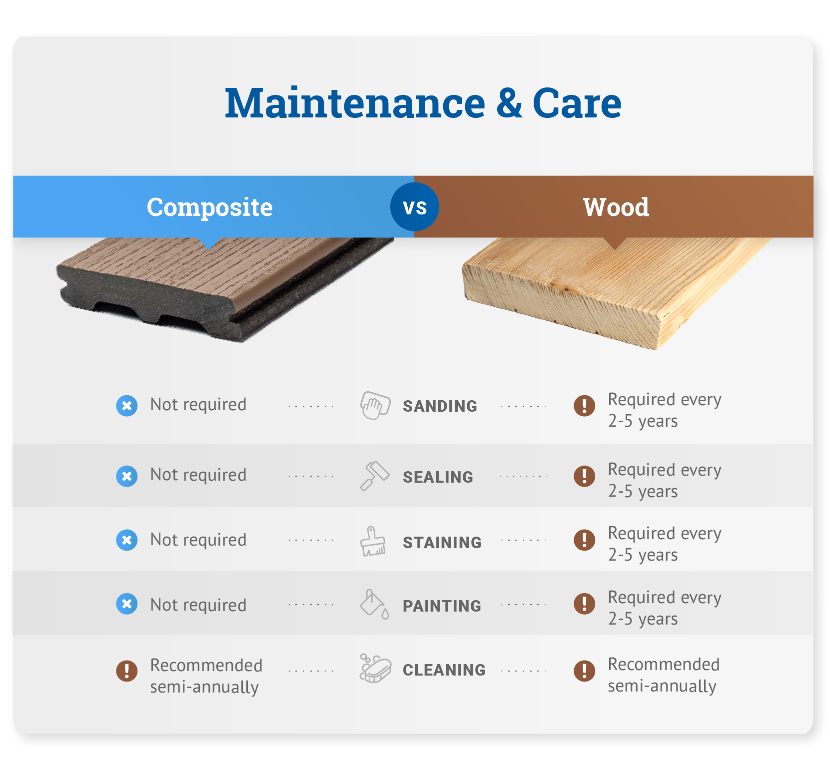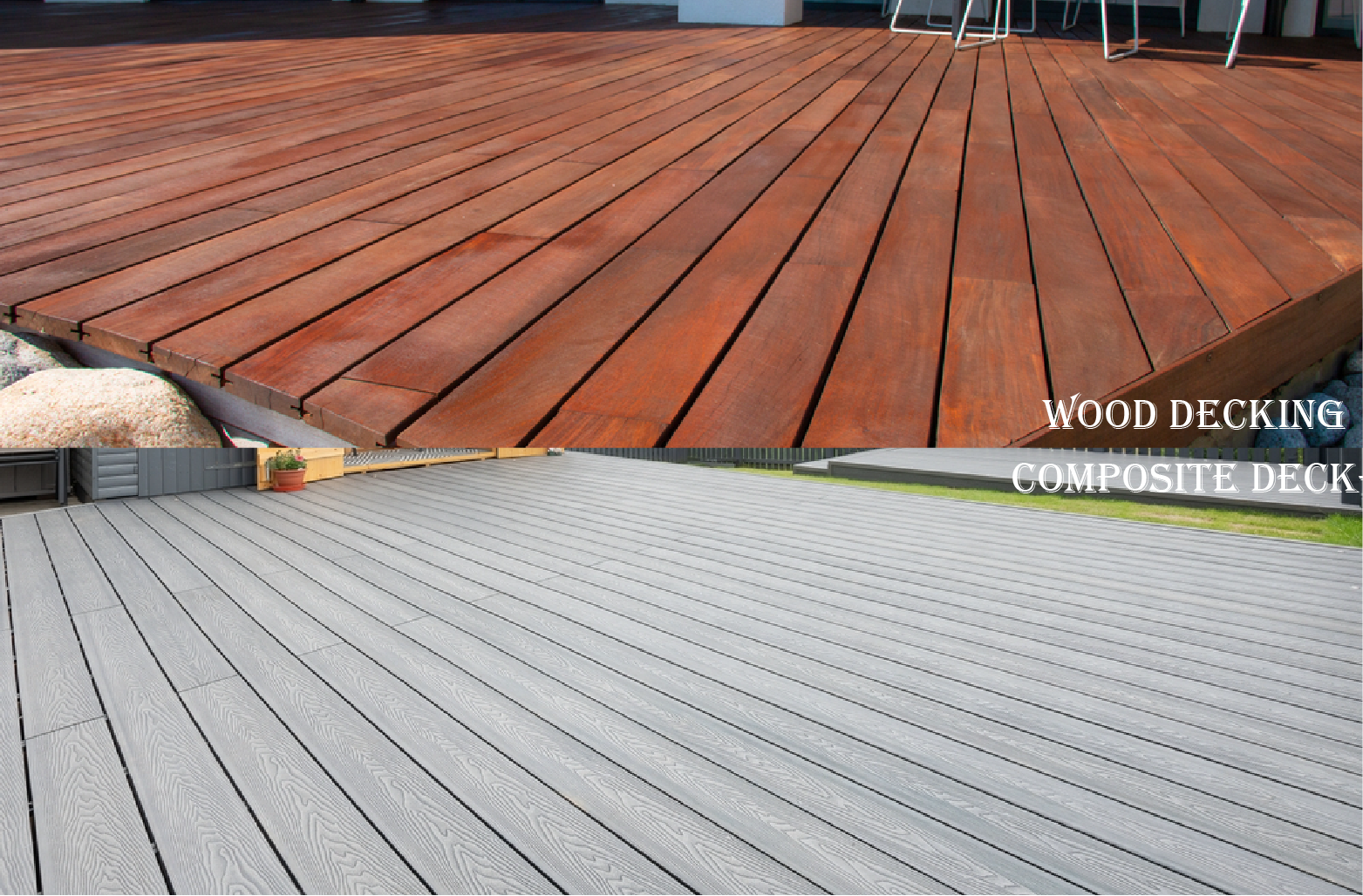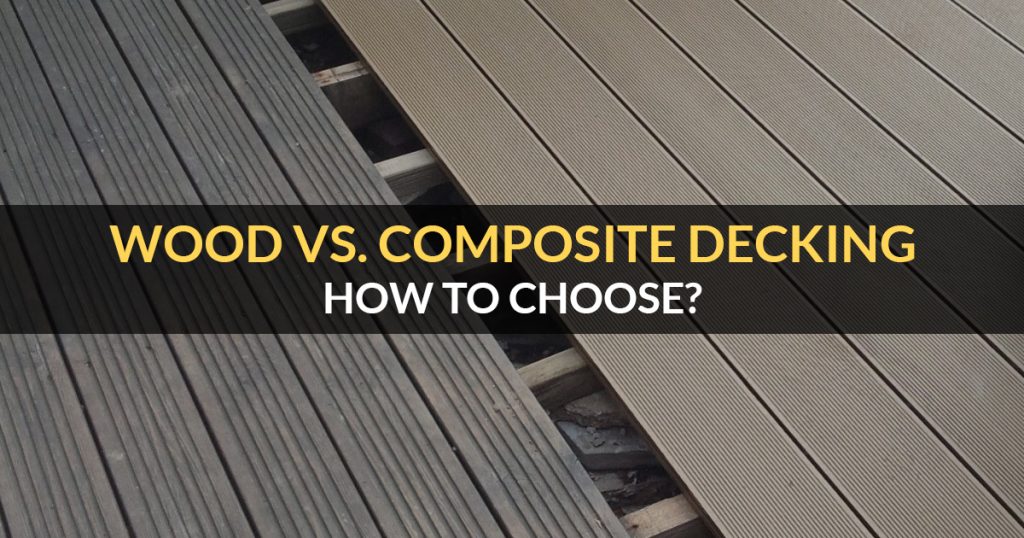Composite vs Wood Decking: Making the Right Choice for Your Outdoor Space
Step into the world of decking with Composite vs Wood at the center stage. Discover the differences, benefits, and considerations that will help you make an informed decision for your outdoor oasis.
Explore the durability, maintenance, and cost-effectiveness of these two popular decking materials.
Composite Decking
Composite decking offers several advantages over traditional wood decking, making it a popular choice for outdoor spaces. Composite decking is known for its durability and longevity. Unlike wood, composite decking is resistant to rot, decay, and insect damage, ensuring a longer lifespan with minimal maintenance.
Maintenance Requirements
- Composite decking requires minimal maintenance compared to wood decking. Regular cleaning with soap and water is usually sufficient to keep composite decking looking good.
- Unlike wood decking, composite decking does not need staining, sealing, or painting, saving time and money on maintenance tasks.
- Composite decking is also less prone to splintering, warping, or fading over time, maintaining its appearance for years to come.
Cost-effectiveness
- While the upfront cost of composite decking may be higher than wood decking, the long-term cost-effectiveness of composite decking often outweighs the initial investment.
- With lower maintenance requirements and longer lifespan, composite decking can save homeowners money on repairs, replacements, and maintenance over time.
- Additionally, composite decking is eco-friendly, as it is often made from recycled materials, contributing to a sustainable outdoor living solution.
Wood Decking

Wood decking offers a classic and timeless look that enhances the natural beauty of outdoor spaces. The warm tones and unique grain patterns of wood bring a sense of warmth and charm to any backyard or patio.
Environmental Impact
Wood decking, while aesthetically pleasing, raises concerns about deforestation and environmental impact. The logging of trees for wood decking can contribute to habitat destruction and loss of biodiversity. It is crucial to consider sustainable sourcing practices and certifications when choosing wood decking materials.
Types of Wood Species
- Cedar: Known for its natural resistance to decay and insects, cedar is a popular choice for wood decking. It has a pleasant aroma and beautiful reddish-brown hue.
- Redwood: Redwood is another durable and attractive option for wood decking. It offers natural resistance to decay and has a rich, deep color.
- Pine: Pine is a budget-friendly option for wood decking, but it requires more maintenance compared to cedar and redwood. It can be pressure-treated for added durability.
Maintenance Needs
Wood decking requires regular maintenance to prolong its lifespan and keep it looking its best. This includes routine cleaning, staining, sealing, and periodic inspections for signs of wear or damage. Proper maintenance can help prevent rot, mold, and insect infestations, ensuring the longevity of your wood deck.
Installation Process

When it comes to installing decking, whether composite or wood, it's important to follow the correct process to ensure a sturdy and durable result. Here, we will detail the installation process for both types of decking, highlighting specific tools and techniques required, as well as common challenges faced.
Composite Decking Installation
Installing composite decking involves a few key steps to ensure a successful outcome. Here is a step-by-step guide:
- Clean the area: Start by clearing the area where the decking will be installed, ensuring it is clean and free from debris.
- Frame the structure: Build a sturdy frame using pressure-treated lumber to support the composite decking boards.
- Install the boards: Begin laying the composite decking boards perpendicular to the support joists, leaving a small gap between each board for expansion.
- Secure the boards: Use composite decking screws or clips to secure the boards to the frame, ensuring they are evenly spaced and level.
- Finish the edges: Cut and install fascia boards to cover the exposed ends of the decking for a polished look.
Wood Decking Installation
Installing wood decking follows a similar process with a few differences. Here is a step-by-step guide:
- Prepare the area: Clear and level the installation area, ensuring it is free from any obstacles or debris.
- Frame the structure: Construct a sturdy frame using pressure-treated lumber to provide support for the wood decking boards.
- Lay the boards: Start laying the wood decking boards perpendicular to the support joists, leaving a small gap between each board for drainage.
- Secure the boards: Use galvanized nails or screws to fasten the boards to the frame, ensuring they are evenly spaced and level.
- Finish the edges: Install fascia boards to cover the exposed ends of the wood decking for a clean finish.
It is essential to use the appropriate tools, such as a saw, drill, level, and measuring tape, for both composite and wood decking installations.
Common Challenges
During the installation process, both composite and wood decking may present some challenges:
- Warpage: Wood decking boards are prone to warping over time, requiring regular maintenance to prevent this issue.
- Expansion: Composite decking boards may expand and contract with temperature fluctuations, requiring proper spacing and fastening techniques.
- Mold and mildew: Both types of decking can be susceptible to mold and mildew growth, especially in damp environments, requiring cleaning and treatment.
- Color fading: Composite decking may experience color fading over time due to exposure to UV rays, necessitating periodic maintenance to preserve the color.
Sustainability and Environmental Impact

When it comes to decking materials, considering the sustainability and environmental impact is crucial in making an informed decision. Let's delve into how composite and wood decking fare in terms of their impact on the environment.
Sustainability Comparison
Composite decking is often touted as a more sustainable option compared to wood decking. This is because composite materials typically consist of a blend of recycled wood fibers and plastic, diverting waste from landfills. In contrast, wood decking requires the harvesting of natural timber, contributing to deforestation and habitat loss.
Recyclability of Composite Materials
One of the key advantages of composite decking is its recyclability. While wood-plastic composites may not be fully biodegradable, they can be recycled into new decking materials or other products. This reduces the demand for virgin materials and minimizes waste in the long run.
Impact of Deforestation on Wood Decking
Wood decking, especially when sourced from unsustainable forestry practices, can have a significant impact on deforestation. Clear-cutting forests for timber not only threatens biodiversity but also contributes to climate change. Choosing responsibly sourced wood or alternative decking materials can help mitigate these negative effects.
Contribution to Environmental Conservation
Both composite and wood decking have the potential to contribute to environmental conservation in different ways. While composite decking helps reduce waste and reliance on virgin materials, sustainably sourced wood decking can support responsible forestry practices and certification programs. Ultimately, making an environmentally conscious choice in decking material can help promote conservation efforts and minimize environmental harm.
Final Wrap-Up
As we wrap up our exploration of Composite vs Wood decking, remember to weigh the pros and cons carefully before choosing the perfect option for your deck. Whether you value sustainability, aesthetics, or longevity, there's a decking material that suits your needs.